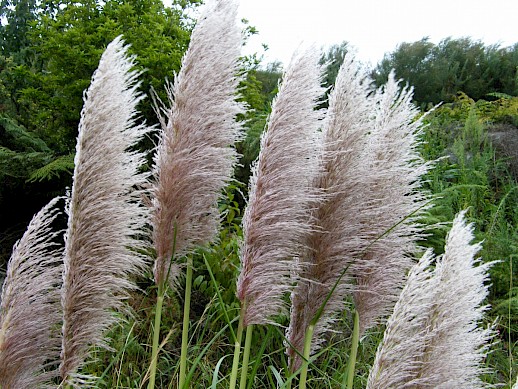The subtleties between toetoe and pampas
Chances are you’ve seen the showy spikes of pampas (Cortaderia selloana, C. jubata) over the last few months - on farms, in gardens, on edges of bush, along rivers and streams. Unfortunately, this invasive South American grass is often mistaken for the closely related New Zealand toetoe, but make no mistake - pampas is a pest, not a native!
At this time of year, the fluffy flowerheads are turning into rougher-looking seedheads - and we are talking massive amounts of seeds here, spread very long distances on the wind. Pampas is often the first species to grow on disturbed sites, popping up so densely that no native species can establish. It replaces groundcovers, shrubs, and ferns, creates fire hazards, provides habitats for possums and rats, and leads the way for weedy vines to invade the areas it has colonized.
And it’s not called ‘cutty grass’ for nothing - anyone who has had to fossick around or beat their way through the serrated blades will know how sharp this grass can be.
If you know what to look for, it’s relatively easy to tell the pesty pampas from the treasured toetoe, especially as they flower at different times of the year. A rule of thumb is that toetoe flowers before Xmas, and pampas flowers afterwards. Toetoe has more golden flowerheads, whereas pampas has creamy white or pinkish-purple flowerheads which are very upright.
At other times of the year, check out the base of the plant - toetoe grows from ground level, whereas pampas builds up a solid base that can rise up to a metre above the ground, and which has dead leaf ends that spiral like wood shavings. This is the part that makes it such a fire hazard, as there is lots of dry material making up this solid base.
Pampas is not easy to kill and you need to be determined if you are going to get rid of it. Check out control options for pampas here. If you do have it in your garden and need some time to work out how to deal with it, at least make sure that the flowerheads are cut of an disposed of carefully before seeds are formed.
